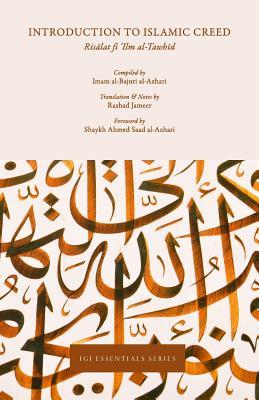 “Introduction to Islamic Creed” by Imam Ibrahim al-Bajuri is a significant work in the field of Islamic theology, specifically outlining the core beliefs of Sunni doctrine (aqidah). This book is considered an essential read for both youth and adults who are interested in understanding the basics of Muslim theology. It is designed to be accessible for self-study but can also be used as a resource in a structured educational setting with a qualified teacher.
“Introduction to Islamic Creed” by Imam Ibrahim al-Bajuri is a significant work in the field of Islamic theology, specifically outlining the core beliefs of Sunni doctrine (aqidah). This book is considered an essential read for both youth and adults who are interested in understanding the basics of Muslim theology. It is designed to be accessible for self-study but can also be used as a resource in a structured educational setting with a qualified teacher.
The book serves several key purposes:
- Educational Foundation: It provides a fundamental step towards formally studying Islamic belief (aqidah).
- Comprehensive Overview: Imam al-Bajuri outlines the essential beliefs that every Muslim should know, helping readers distinguish between truth and falsehood, and orthodox and heterodox teachings within Islam.
- Learning Aid: The inclusion of vocalized Arabic script alongside the English translation aids students in learning the language of the Qur’an, the Prophet Muhammad, and Islamic scholars.
- Preservation of Texts: The book helps in preserving the original words of Imam al-Bajuri, which is important for maintaining the authenticity of the teachings.
It is highly regarded for its clarity and concise explanation of complex theological concepts, making it an excellent resource for anyone seeking to start in their understanding of Islamic beliefs or in refreshing themselves on main principles.
The book is designed to be both a teaching aid and a self-study guide, making it a versatile resource for students of Islamic theology at various levels. The inclusion of the vocalized Arabic script alongside the English translation is particularly valuable. It not only preserves the original language of the text but also aids students in learning Arabic, the language of the Qur’an and Islamic scholarship. This feature is a thoughtful addition that enhances the educational value of the book, catering to both beginners and those more advanced in their studies.
One of the strengths of this book is its clarity in presenting the core beliefs of orthodox Sunni Islam. Imam al-Bajuri systematically outlines the essential doctrines that every Muslim should know, making it easier for readers to distinguish between orthodox and heterodox views within the Islamic tradition. The text addresses key theological concepts with precision, providing readers with a solid understanding of what constitutes the beliefs of Ahl al-Sunna wa al-Jama’a (the people of the Sunnah and the community).
Jameer’s translation is commendable for its readability and fidelity to the original text. He manages to convey the nuances of Islamic theology in a way that is accessible to contemporary readers without sacrificing the scholarly depth that is characteristic of Imam al-Bajuri’s work. The translator’s notes and explanations further enhance the reader’s comprehension, making the book a useful tool for both personal study and classroom instruction.
However, readers unfamiliar with classical Islamic texts might find certain sections dense or challenging, especially if approached without prior background knowledge in Islamic theology. While the book is intended for a broad audience, including those who may study it independently, it is best appreciated when read with some foundational understanding or under the guidance of a knowledgeable teacher.
In conclusion, “Introduction to Islamic Creed” is an essential text for anyone interested in gaining a deeper understanding of Sunni Islamic beliefs. Imam al-Bajuri’s concise yet comprehensive presentation of the aqidah, combined with Rashad Jameer’s thoughtful translation, makes this book a valuable resource for students of Islamic theology, educators, and anyone seeking to strengthen their knowledge of orthodox Sunni doctrine. The inclusion of the original Arabic script alongside the English translation further enriches the text, making it not just a theological treatise, but also a linguistic tool for those aspiring to connect more deeply with the language of Islamic scholarship.